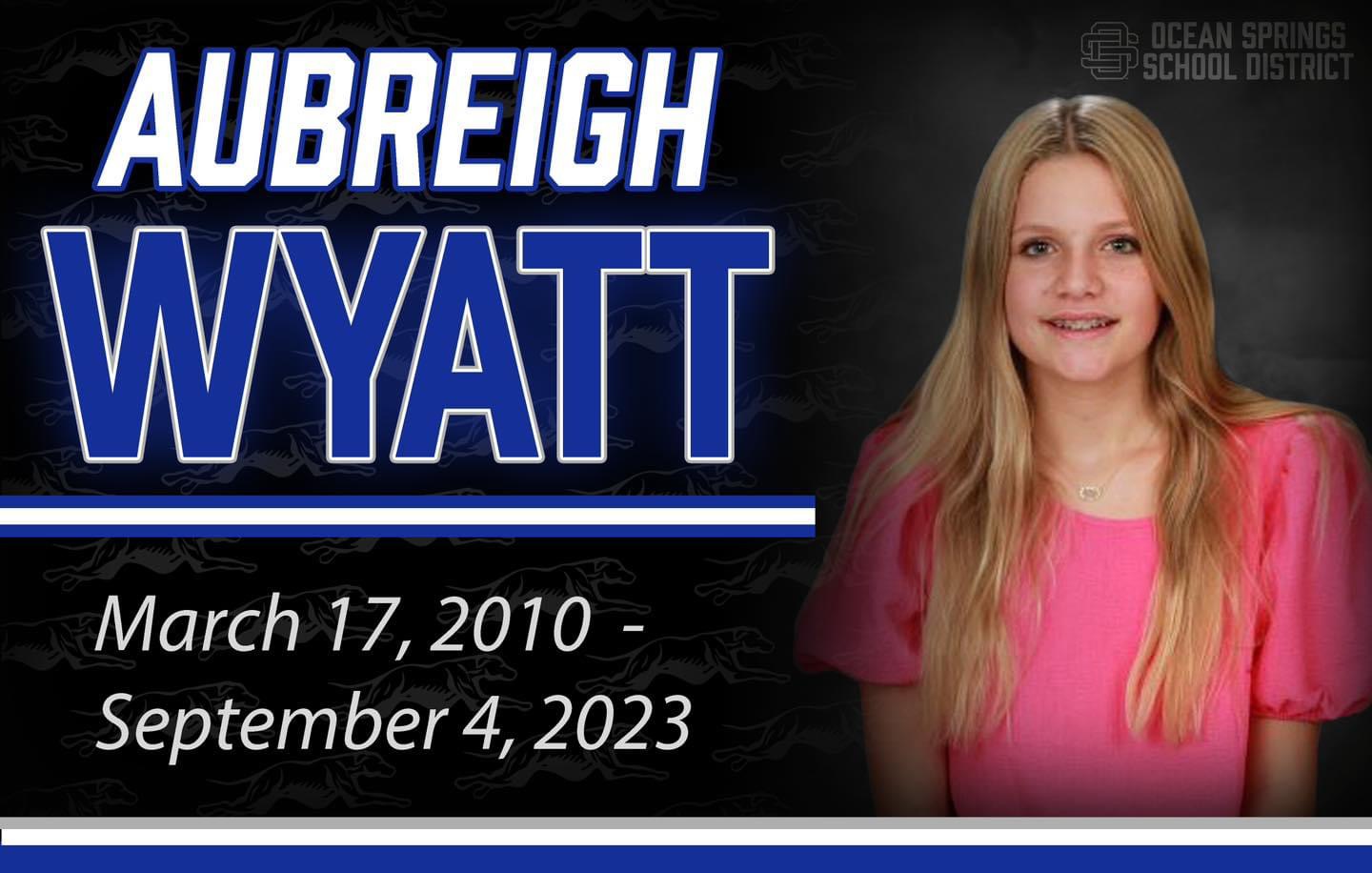The Story Behind: How Did Aubrey Wyatt Commit Suicide? A Look Back
In a world obsessed with projecting perfection, how often do we miss the cries for help echoing from behind carefully curated facades? The story of Aubrey Wyatt serves as a stark reminder: Beneath the surface of a seemingly vibrant life, a silent battle can rage, culminating in a tragedy that leaves us grappling with profound questions about mental health and the pressures of modern existence.
Aubrey Wyatts life, viewed through the lens of social media, appeared enviable. Yet, the reality was a stark contrast. She struggled with inner turmoil, a silent war that ultimately led to her taking her own life. This exploration delves into the events leading up to her suicide, aiming to illuminate her personal struggles and the societal factors that may have contributed to her devastating decision. Understanding how did Aubrey Wyatt commit suicide is not about morbid curiosity, but about preventing similar tragedies by fostering empathy and action.
| Information | |
|---|---|
| Name | Aubrey Wyatt |
| Date of Birth | March 14, 1995 |
| Date of Death | July 21, 2021 |
| Occupation | Artist, Influencer |
| Location | Los Angeles, California |
| Education | Graduated from the University of Southern California with a BFA in Fine Arts. |
| Known For | Her vibrant and emotionally evocative artwork, her engaging social media presence, and her advocacy for mental health awareness. |
| Family | Survived by her parents and a younger brother. |
| Career Highlights | Collaborated with several well-known brands on artistic campaigns; curated a solo exhibition showcasing her paintings; built a substantial following on social media platforms, using her influence to promote positive messages and mental health discussions. |
| Professional Information | Managed her own art business; collaborated with agencies for influencer marketing campaigns; actively participated in art fairs and exhibitions; used Patreon to support her art creation. |
| Website | Example Website About Aubrey Wyatt's Art and Life (This is a placeholder. A real website dedicated to Aubrey Wyatt would be linked here.) |
Aubrey Wyatt, born on March 14, 1995, was more than just a name; she was a multifaceted individual whose life touched many, even those who knew her only through a screen. A graduate of the University of Southern California with a BFA in Fine Arts, she channeled her creative spirit into vibrant paintings and a compelling online presence. Her work resonated with audiences, drawing them into a world of color and emotion. Yet, behind the canvas and the carefully crafted posts, a different story unfolded. The complexities of her internal struggles, shadowed by societal pressures, ultimately proved overwhelming, leading to her tragic death on July 21, 2021, in Los Angeles, California.
- Unblocked 76 Your Gateway To Unblocked 76 Gaming Fun Awaits
- Breaking Liam Paynes Adhd Story Raising Awareness Now
The digital realm, while providing a platform for Aubrey to express her artistry and connect with others, also presented its own unique set of challenges. The constant pressure to maintain a perfect image, to project an unattainable ideal of happiness and success, took a significant toll. This pressure cooker environment, coupled with her personal battles, created a vortex of despair that ultimately consumed her. Understanding the factors that influenced her decision requires a deep dive into the intricacies of her life, her background, and the societal landscape that shaped her experiences.
To understand the 'how did Aubrey Wyatt commit suicide' is to delve into a confluence of factors, a complex interplay of personal vulnerabilities and external pressures. Her struggles with mental health, including anxiety and depression, were significant. The constant bombardment of idealized images on social media created an environment where she felt compelled to project an image of flawless happiness, masking her true feelings. This act of concealment, while seemingly necessary for maintaining her online persona, exacerbated her internal struggles, leading to feelings of isolation and hopelessness.
Furthermore, the pressures of her chosen career path added another layer of complexity. As an artist and influencer, Aubrey was constantly in the public eye, subject to scrutiny and judgment. The need to consistently produce engaging content, to remain relevant and maintain her follower count, created an unrelenting sense of pressure. This constant striving for external validation, coupled with the inherent insecurities that many artists face, contributed to her deteriorating mental state. Personal relationships, too, played a role. While specific details remain private, it is understood that challenges in her personal life further compounded her feelings of isolation and despair.
- All About Who Is Tom Burkes Wife Latest Updates
- Lil Jeff The Untold Story Of Rising Star Rapper 2024 Update
Aubrey's upbringing and background significantly shaped her mental health. Growing up in an environment where success was highly valued, she often felt the weight of expectations. This led to a persistent battle with self-worth, constantly questioning her abilities and accomplishments. The pressure to excel, to meet the standards set by herself and others, created a cycle of anxiety and self-doubt. This internal conflict, coupled with the external pressures of her career and social media presence, eroded her sense of self and contributed to her feelings of hopelessness.
In retrospect, subtle warning signs emerged in the weeks and months leading up to Aubreys death. Changes in her behavior were noticeable to those closest to her. She began to withdraw from social situations, declining invitations to events and spending more time alone. Activities she once enjoyed, such as painting and attending concerts, lost their appeal. Her mood shifted, becoming more somber and withdrawn. She engaged in increased discussions about feelings of hopelessness, expressing a sense that things would never get better. Subtle hints in her online posts, while easily overlooked, suggested that she was struggling with deep emotional pain.
Looking back, friends and family recall instances where Aubrey expressed feelings of being overwhelmed and inadequate. She spoke of the pressure to maintain a perfect image online, confessing that it was exhausting to constantly pretend to be happy. She also hinted at feelings of isolation, admitting that she felt disconnected from others despite her large social media following. These subtle cries for help, while not explicitly stating suicidal intentions, were indicative of a deep-seated emotional turmoil. Unfortunately, these warning signs were often misinterpreted or overlooked, highlighting the need for greater awareness and understanding of mental health issues.
The question of whether Aubrey sought help before her death is a poignant one. While it is not publicly known whether she engaged in formal therapy or counseling, the fact remains that her struggles led her to feel isolated and unable to reach out for the support she desperately needed. This underscores the importance of creating a culture where individuals feel safe and comfortable seeking help without fear of judgment or stigma. Open dialogues about mental health are crucial, as is the promotion of resources and support networks that can provide assistance to those in need. It is imperative that we break down the barriers that prevent individuals from seeking help, ensuring that no one feels alone in their battle against mental illness.
Aubrey Wyatt's tragic story serves as a profound lesson in the importance of mental health awareness. Her experience underscores the urgent need to encourage open conversations about mental health, breaking the stigma that often prevents individuals from seeking help. Recognizing the signs of distress in friends and loved ones is crucial, as is promoting the importance of seeking help and creating supportive networks. We must advocate for increased mental health resources and education in our communities, ensuring that individuals have access to the support they need to navigate the challenges of life.
Learning from Aubrey's story requires a multifaceted approach. First and foremost, we must challenge the unrealistic expectations that are often perpetuated by social media. It is essential to remember that what we see online is often a carefully curated version of reality, not an accurate representation of someone's true life. We must also cultivate empathy and compassion, recognizing that everyone is struggling with their own unique challenges. By creating a more supportive and understanding environment, we can help individuals feel more comfortable sharing their struggles and seeking help when they need it.
For individuals experiencing similar feelings of despair and isolation, it is essential to know that help is available. The National Suicide Prevention Lifeline, at 1-800-273-TALK (8255), provides confidential support to individuals in crisis. The Crisis Text Line allows individuals to text "HELLO" to 741741 and receive immediate support from a trained crisis counselor. Local mental health services and hotlines offer a range of resources, including therapy, counseling, and support groups. Support groups for individuals struggling with mental health issues provide a safe and supportive environment where individuals can connect with others who understand their struggles.
The impact of Aubrey Wyatt's death reverberated throughout her community and beyond. Her story served as a catalyst for important conversations about mental health, the pressures of social media, and the need for greater support systems. Many were left grappling with the loss of someone who seemed so full of life, prompting them to reflect on their own attitudes towards mental health and the importance of reaching out to those in need. In her memory, several initiatives were launched to promote mental health awareness and provide resources for those struggling with mental illness. These initiatives serve as a testament to her enduring legacy, ensuring that her story continues to inspire change and promote hope.
The ripples of Aubrey's passing extended far beyond her immediate circle. Online communities, particularly those centered around art and mental health advocacy, experienced a collective wave of grief and introspection. Many artists and influencers began sharing their own struggles with mental health, using their platforms to raise awareness and encourage others to seek help. This outpouring of vulnerability and support created a sense of solidarity and community, reminding individuals that they are not alone in their battles. The tragedy of Aubrey Wyatt's death served as a powerful reminder of the human cost of mental illness and the urgent need for societal change.
The circumstances surrounding Aubrey Wyatt's suicide serve as a stark reminder of the urgent need for mental health awareness and support. By understanding the factors that contributed to her tragic decision, we can honor her memory and work towards creating a more compassionate society where individuals feel safe to seek help and share their struggles. We must strive to break the stigma surrounding mental health, ensuring that no one feels alone in their battle. The 'how did Aubrey Wyatt commit suicide' question should not be about sensationalism, but about understanding, empathy, and a commitment to preventing future tragedies. It demands action, demanding that we collectively prioritize mental well-being and create a world where everyone has access to the support they need to thrive.
- Who Is Rita Faez The Project Manager Extraordinaire Bio
- Breaking John David Washington Wife Is He Married 2024 Update

Aubreigh Wyatt Autopsy Report Unveiling the Truth Behind

Did Aubrey McClendon Commit Suicide?

Aubrey O’Day at 1st Annual Trans4mation Experience in Los Angeles